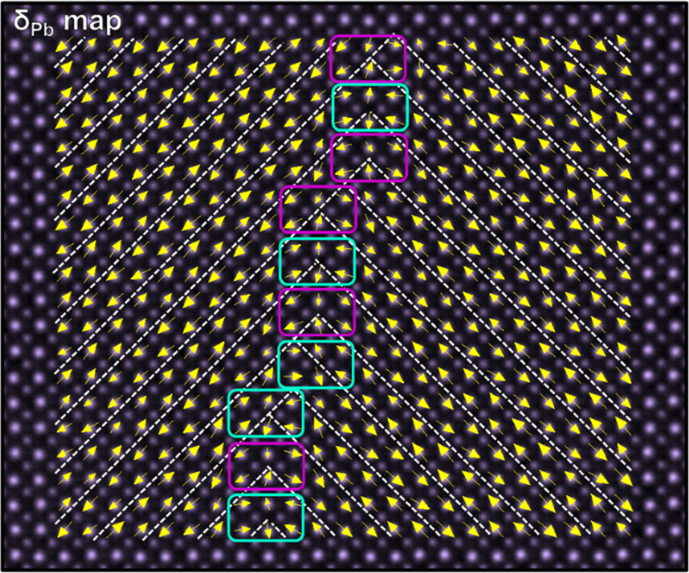In physics, topological singularities are highly stable structures that occur on a very small scale. Thanks to their winding geometry, they are extremely resistant to change. This remarkable stability makes them of particular interest for various applications, most notably information storage. One example is the electric vortex, a microscopic 'whirlpool' formed by electric dipoles — regions where positive and negative charges are separated and depicted as tiny arrows — rotating in a circular pattern. A related but less obvious structure is the antivortex, which is formed by dipoles converging in one direction and diverging in another.
 Vortices and antivortices’ distribution in the material’s structure. Image Credit: ICN2
Vortices and antivortices’ distribution in the material’s structure. Image Credit: ICN2
Such phenomena have been widely studied in ferroelectric materials, which are materials with spontaneous polarization. However, the existence of vortices in materials with no net polarity had never been observed. Until now. In a recent breakthrough, scientists at ICN2 contributed to a study that reported the presence of electric vortices and antivortices in PbZrO3, an antiferroelectric material characterized by having antiparallel dipoles and no net polarity. This surprising discovery challenges assumptions about which materials can host such topological structures.
An Unprecedented Discovery
These surprising findings, recently published in Nature Materials, are the result of an international collaboration between researchers from ICN2, the University of Sydney, Wuhan University, the University of Silesia, the Institute of Applied Physics in Warsaw and the University of Liège. Dr Ying Liu, from the ICN2 Oxide Nanophysics Group, was one of the lead researchers on the study, supervised by ICREA Prof. Gustau Catalán. ICREA Prof. Jordi Arbiol, head of the ICN2 Advanced Electron Nanoscopy Group, was also involved in the work.
Using advanced electron microscopy techniques and theoretical calculations, the researchers demonstrated that electric vortices and antivortices can emerge in materials with no net polarization. As Prof. Gustau Catalán explains, 'We still don’t know whether these findings will lead to real-world applications. But what’s clear is that they open up exploration of topological phenomena in materials that had previously been excluded from this type of research”.
Although it's still early days, this discovery could have important implications for the future development of smaller, more powerful electronic devices.